Female Hairline Counseling
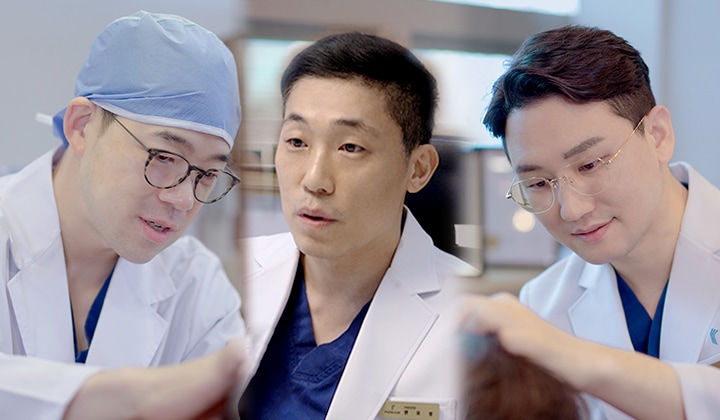
Q&A by actual patients
Do not ask around.
FORHAIR will provide you with
the most accurate and truthful information.
We add loveliness to naturalness.
Fine soft hair at the very front of the hairline is very important. This is because a natural appearance will be determined by the presence or absence of such fine soft hair.
As such, it is very important to sequentially and naturally implant fine hair strands rather than simply filling empty areas of scalp. If you do not have such fine soft hair to begin with, we can elevate the natural looking appearance by producing fine soft hair effects with thin hair strands.
/ Lack of density Case of hairline correction
with multiple-hair follicles Natural results achieved by FORHAIR
There occasionally are cases in which the implanted hair grows curly or becomes rough. Although there is no accurately known cause of curly hair, it occurs more frequently if the hair follicles are damaged or when thick hair has been implanted.
Although it rarely happens at FORHAIR, it has been reported that only very slightly curled hair growth occurs rather than the severely curled or frizzled hair that we normally think of when conjuring up an image of curly hair.
The phenomenon of curly hair is a side effect that can be adequately prevented if fine hair is accurately implanted by making slits that are perfect for the lengths of the hair follicles.
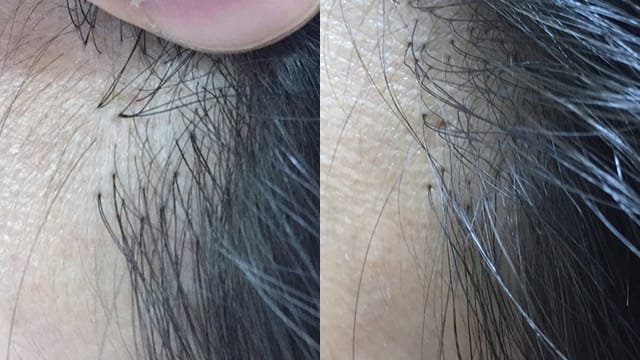
Unnaturalness due to implantation of thick multiple-strand hair follicles in the hairline
Hair is bent and curliness occurs
FORHAIR implants thin ultra-fine hair follicles at the very front of the hairline, rather than ordinary single-strand hair follicles, followed by single-strand hair follicles and multiple-strand hair follicles. Although it would not happen, even if the implanted hair displays a curly appearance shortly after the procedure, you need not be concerned since hair will naturally assume the appearance of your normal original hair after approximately 1~2 years.
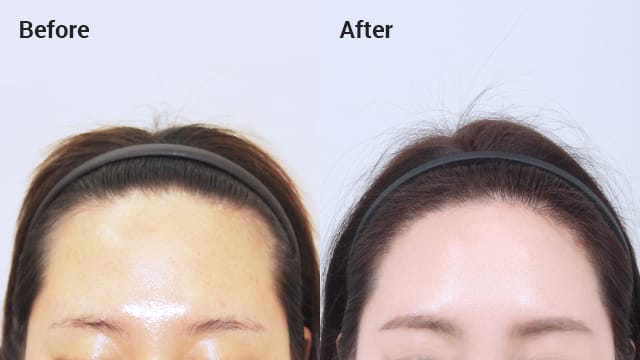 Partial-shaven FUE,
Partial-shaven FUE,1300 grafts, After 6 months
FORHAIR adopted its non-incision method of collecting hair follicles under partial shaving or without shaving in the occipital region of the head.
Although it differs depending on the number of hair follicles to be collected, partial shaving involves an area equivalent to about 1/2 ~ 1/3 of your palm.
Since it is possible to cover the shaven area with hair on the back of head, not only for those with long hair but also for those with short hair, it will look quite natural without being noticeable even from a distance of about 1m.
-
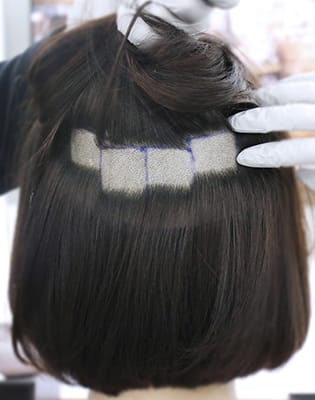 Partial shaving
Partial shaving
-
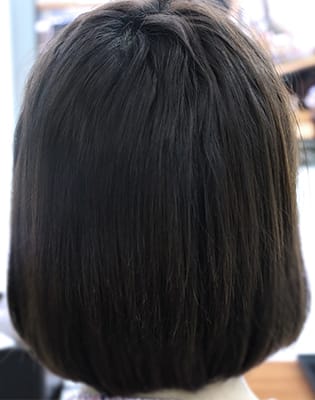 Immediately after partial shaving
Immediately after partial shaving
Occasionally, sensitive people may observe the difference. Accordingly, there are many clients who prefer to undertake a procedure without shaving or incision that cuts the hair follicles needed to a length of 1~2mm for collection. Since it is possible to collect healthier hair follicles in a wider area in comparison to the partial shaving procedure, there is almost no difference in density between the donor area and non-collection area. Moreover, scars are rarely visible. Even men, for whom a wider area is shaven and who have hair that is shorter than women, need not to worry since it is not noticeable when covered with hair on the back of the head.
-
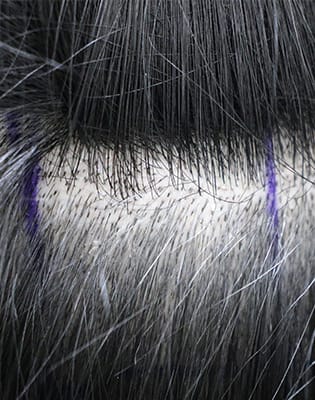 Only hair follicles
Only hair follicles
to be collected
are cut short -
 Immediately
Immediately
after non-shaved
procedure
There are rare situations in which the implanted hair falls off if healthy hair follicles are collected without damage and implanted well at an accurate depth.
Transplanted hair begins to fall off about 2 weeks after implantation, which is the period of engraftment. This can induce anxiety in many people.
However, it is a normal phenomenon as a part of the stage of re-growth of new hair. As such, you need not worry since the hair follicles has stably settled in the scalp even if hair falls off.
Although it differs among individuals, new hair generally begins to grow after 3~4 months and you can achieve satisfactory effects about 1 year following hair transplant. If the implanted hair still falls off after about 1 year, there is high probability that hair follicles may have been damaged during the procedure, or that it is a side effect due to inflammation. Therefore, we place foremost priority on the engraftment rate of hair follicles. If one appreciates FORHAIR degree of expertise in meticulously executing the entire surgery procedure to elevate the hair follicle engraftment rate, concerns about such side effects will disappear.

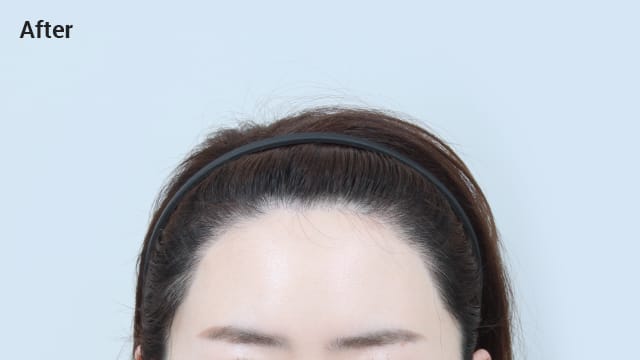 Partial-shaven FUE,
Partial-shaven FUE,900 grafts, After 7 months
Although it differs among individuals, there is almost no pain due to administration of partial anesthesia. You may experience only a slight level of prickling pain after the procedure.
Occasionally, you may experience a twinge in the top of the head after the surgery. This is due to the stimulation imparted on the scalp through hair transplant and is pain experienced in areas irrelevant to the hair line.
Although rare, you may also experience abnormal dulling of the scalp’s sensitivity. The sense will return to normal in time, since it is a symptom of the process of recovery of minute nerves in the areas involved in the surgical procedure.
Patients who have undergone non-incisional surgery at FORHAIR tell us that they experience more itchiness rather than pain.
It is possible that you experience slight itchiness in the recovery process as scabs form at the site of slits made for implantation of hair follicles.
You need not be concerned, since slight pain or itchiness is an absolutely normal phenomenon in the process of recovery from surgery.
Although there may occasionally be some swelling after the hairline correction procedure, it is highly rare to the extent of being non-existent. Therefore, you will be able to engage in your normal daily activities without having to wear a hat or cover your face.
There occasionally are cases in which the forehead swells up as if a fat graft had been injected. This is the result of trickling down of the buffer solution injected during surgery towards the face rather than swelling due to inflammation. In the case of hairline correction for women, there is almost no swelling and, even if minor swelling occurs, it will return to normal within 2~3 days, and you won’t suffer any inconvenience in your daily life.



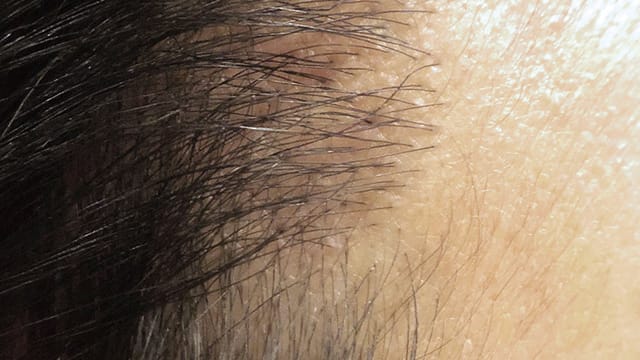
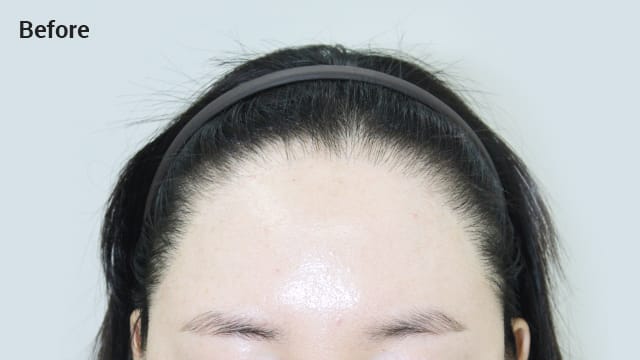
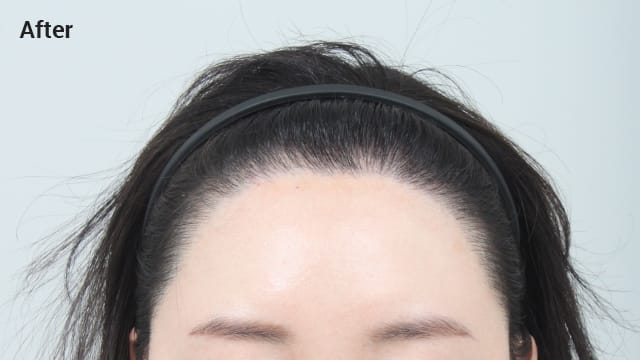

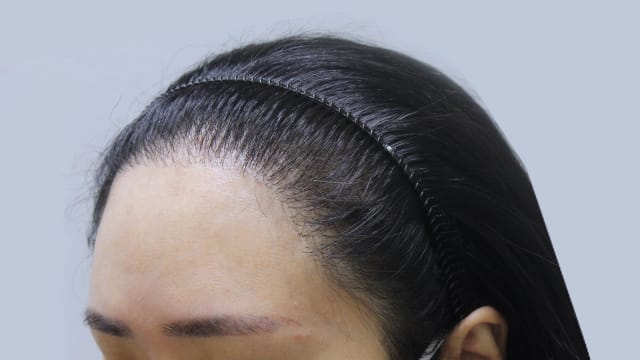
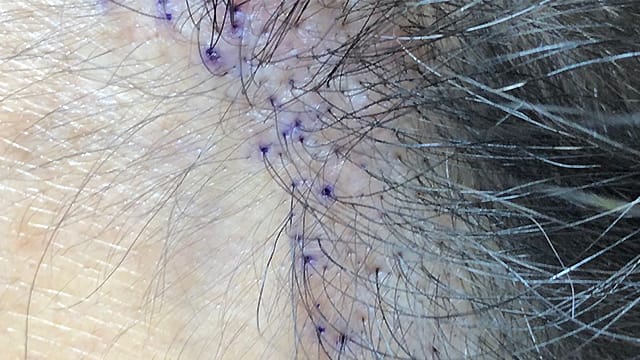
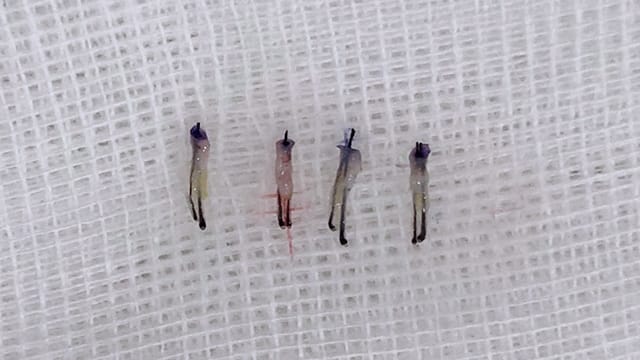
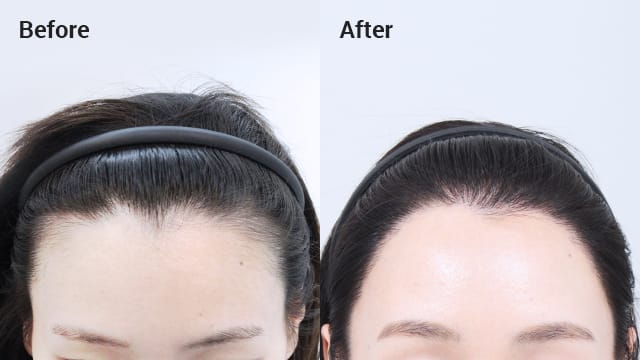
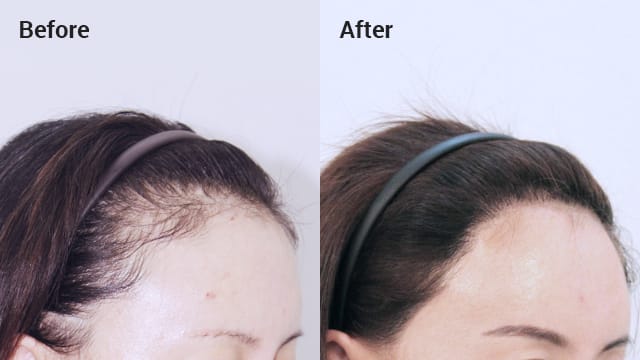

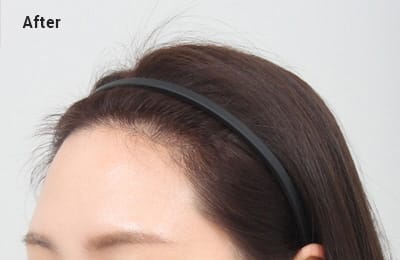 Partial-shaven FUE,
Partial-shaven FUE,